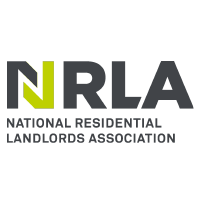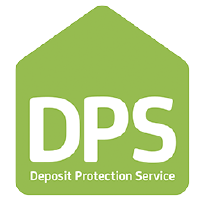
When renting a property in the UK, whether it’s a flat in London or a house in the countryside, it’s essential to know who your landlord is. Understanding the identity of your landlord helps protect your rights as a tenant and ensures you have a point of contact for any issues that might arise during your tenancy. This article provides a comprehensive guide on how to find out who the landlord is for a property in the UK, offering practical advice and resources for tenants and those involved in house searching.
1. Why Knowing Your Landlord is Important
Before diving into the methods of finding your landlord, it’s worth understanding why this information is crucial.
Legal Rights and Responsibilities
Knowing who your landlord is ensures that you understand your legal rights and responsibilities as a tenant. It allows you to verify that your landlord is complying with UK tenancy laws, such as ensuring the property is safe and habitable, registering your deposit with a tenancy deposit scheme, and providing an energy performance certificate.
Direct Communication
Having direct contact with your landlord can simplify communication about repairs, rent payments, or any issues that may arise during your tenancy. It also helps to avoid any potential scams or misunderstandings that could occur when dealing with intermediaries.
Protection from Rogue Landlords
Unfortunately, not all landlords operate within the law. Identifying who your landlord is can protect you from rogue landlords who may neglect their responsibilities, charge unfair rents, or fail to protect your deposit.
2. Identifying the Landlord Through Tenancy Agreements
Reviewing the Tenancy Agreement
The tenancy agreement is the first place you should check to find out who the landlord is. This legal document should clearly state the landlord’s name and address. It is a legal requirement in the UK for landlords to provide their tenants with a written tenancy agreement, especially for assured shorthold tenancies (ASTs), which are the most common type of tenancy in England and Wales.
- Landlord’s Details: Look for a section in the agreement that details the landlord’s name and contact information. The address provided might be the landlord’s residential address or the address of their letting agent if they are using one.
- Letting Agent’s Role: If a letting agent manages the property, their details will also be listed in the agreement. However, even if an agent is involved, the landlord’s identity should still be disclosed.
Asking the Letting Agent
If you’re renting through a letting agent and the tenancy agreement doesn’t clearly state who the landlord is, you have the right to ask the agent directly. Letting agents are required by law to provide you with the landlord’s contact details within 21 days of your written request.
3. Using the Land Registry
What is the Land Registry?
The Land Registry is a government agency that maintains records of land and property ownership in England and Wales. By searching the Land Registry, you can find out who owns a particular property, including the landlord of a property for rent in London or elsewhere in the UK.
How to Conduct a Land Registry Search
Conducting a search through the Land Registry is a straightforward process:
- Visit the Land Registry Website: Go to the official Land Registry website (www.gov.uk/search-property-information-land-registry).
- Property Search: Enter the address of the property you’re interested in. The Land Registry will provide you with the option to download the Title Register for a small fee (currently £3).
- Reviewing the Title Register: The Title Register will show the name of the property owner, which should be your landlord. It also provides details about the property, including any mortgages or legal charges.
What to Do If the Landlord Is Not Listed
In some cases, particularly if the property is owned by a company or trust, the listed owner may not be a person but an entity. If this is the case, further investigation may be required to determine the individual or individuals behind the entity.
4. Investigating Through Local Authorities
Contacting the Local Council
Another way to find out who the landlord is for a property is to contact the local council, especially if the property is rented out as a House in Multiple Occupation (HMO). HMOs require landlords to register with the local council, and this registration is public information.
- HMO Register: If you believe the property is an HMO (for example, if you’re sharing the property with several other unrelated tenants), you can request to see the HMO register from the local council. This register will list the name and contact details of the landlord.
- Council Tax Information: In some cases, you might also be able to gather information about the landlord through council tax records. While you may not get the landlord’s name directly, you could find out if the council has the owner’s details on file.
Using Freedom of Information Requests
If you’re having difficulty obtaining information through conventional means, you might consider submitting a Freedom of Information (FOI) request to the local council. While councils are not obliged to provide personal information under FOI laws, they may be able to confirm whether they hold certain information, such as the identity of a landlord.
5. Exploring Online Resources
Home Search Sites
Home search sites are invaluable tools for finding a property for rent in London, but they can also provide useful information about landlords. While these sites typically focus on listings and property details, some platforms may include landlord reviews or information if the landlord has a significant online presence.
- Rightmove and Zoopla: While primarily used for searching properties, some listings might include details about the landlord, especially if the property is let directly by the owner rather than through an agent.
- OpenRent: This platform allows landlords to list properties directly, often including their contact details. Renting directly through OpenRent can sometimes make it easier to identify and communicate with the landlord.
Landlord Review Websites
There are a few websites and forums where tenants can share their experiences and reviews of landlords. While these sites are not comprehensive, they can sometimes offer insights into who the landlord is, particularly in larger buildings or properties with multiple units.
- AllAgents.co.uk: This site primarily reviews letting agents, but if the landlord is well-known or has multiple properties, you might find relevant information.
- TrustPilot: Some landlords and property management companies have profiles on TrustPilot, where you can read reviews and gather more information.
Social Media and Online Searches
In some cases, a simple online search might yield results. Many landlords, especially those who own multiple properties, may have an online presence through business websites, LinkedIn profiles, or social media. While this method is less formal, it can sometimes be effective in identifying the landlord.
6. Direct Contact and Legal Routes
Contacting the Neighbours
Sometimes, the simplest method can be the most effective. Neighbours, especially those who have lived in the area for a long time, might know the landlord or have useful information about the property’s ownership. While this approach requires some initiative, it can be a quick way to gather information.
Sending a Written Request
If you’re already living in the property and the landlord’s details are not clearly provided, you can make a formal request in writing. Under UK law, you have the right to know who your landlord is. The request should be addressed to the person or entity collecting your rent. They are legally required to provide you with the landlord’s contact details within 21 days.
Seeking Legal Advice
If you’ve exhausted all other methods and still cannot determine who your landlord is, it might be time to seek legal advice. A solicitor can assist you in obtaining this information, particularly if there are disputes or concerns about the tenancy. Legal professionals can also help if you suspect the property is being let illegally, such as if the landlord is not following proper regulations or failing to protect your deposit.
7. What to Do After Identifying the Landlord
Verifying the Landlord’s Identity
Once you have identified the landlord, it’s essential to verify their identity. This can be done through several means:
- Cross-Reference with the Tenancy Agreement: Ensure that the landlord’s name matches the one provided in the tenancy agreement.
- Check Against the Land Registry: If you’ve obtained the landlord’s name through the Land Registry, cross-check this with the details you have from other sources.
- Request Identification: It’s within your rights to ask the landlord for identification, especially if you’re concerned about the legitimacy of the tenancy.
Communicating Directly with the Landlord
Establishing direct communication with your landlord is crucial for a smooth tenancy. Ensure you have up-to-date contact information, including a phone number and email address. Regular communication helps in promptly addressing any issues that arise during your tenancy.
Understanding Your Landlord’s Responsibilities
Once you know who your landlord is, it’s important to understand their responsibilities. Landlords are required by law to:
- Ensure the property is safe: This includes having gas safety checks, electrical safety standards, and providing smoke and carbon monoxide alarms.
- Register the deposit: Landlords must register your deposit in a government-approved tenancy deposit scheme within 30 days of receiving it.
- Maintain the property: Landlords are responsible for repairs to the structure and exterior of the property, as well as ensuring the water, gas, and electricity supply is functioning properly.
If your landlord fails to meet these obligations, you have the right to take action, including withholding rent (under specific circumstances) or involving local authorities.
Conclusion
Finding out who the landlord is for a property in the UK is a critical step in ensuring a secure and legal tenancy. Whether you’re looking at a property for rent in London or anywhere else in the country, knowing who your landlord is gives you peace of mind and legal protection.
There are various methods to identify a landlord, from reviewing your tenancy agreement to conducting a Land Registry search or contacting local authorities. Home search sites and online resources can also be valuable tools in your quest to find out this essential information.
Once you’ve identified your landlord, ensure that all details are correct and maintain open communication. Understanding your rights and your landlord’s responsibilities will help you navigate your tenancy confidently, ensuring a positive renting experience in the UK.
Looking for homes? Check this b houses for sale.


